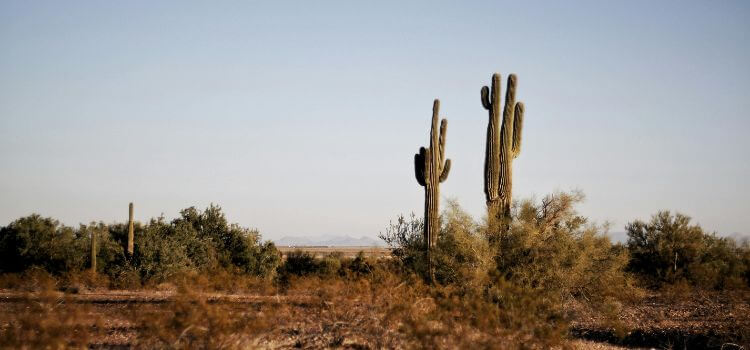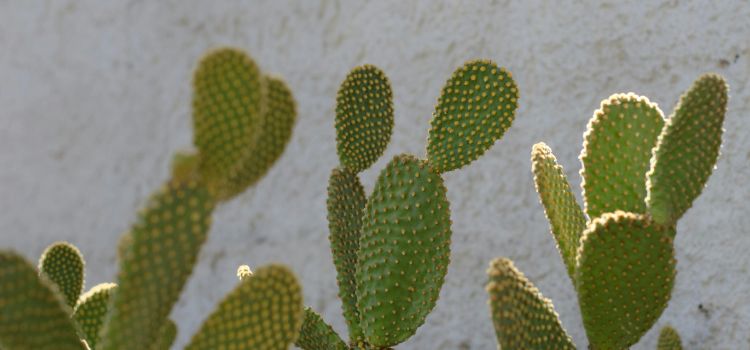As an Amazon Associate, I earn from qualifying purchases.
Curious about your cactus’s age? Unearth the mystery with our guide on ‘How to Tell How Old a Cactus Is. Deciding a cactus’s age can often be difficult without growth records. Size, species characteristics, and growth conditions give clues about its age.
Estimating the age of a cactus can be a challenging endeavour, not unlike tattering a botanical mystery. Despite popular belief, aging can tell a story of survival and perseverance for botanists and lovers. Cacti develop at different rates based on species type, sunlight, water intake, and climate.
A skilled eye can discern much from the plant’s physical characteristics: its height, the number of ribs or segments, and overall health. Cacti don’t offer such straightforward indicators, unlike trees, which can be aged by counting their inner rings. Thus, fans and professionals must use growth trends and species-specific information to estimate a cactus’s lifespan.
How To Tell How Old A Cactus Is?
Have you ever gazed at a cactus and wondered about its journey through time? Uncovering a cactus’s age can be a fascinating quest. Cacti are silent witnesses to the passing years, yet they don’t give up their age easily.
Common Myths About Cactus Aging
Many believe that counting a cactus’ spines can reveal its age. This is a common myth, but it’s not true. Other myths suggest that size equals age or that a certain height marks a specific number of years. Cacti grow at different rates based on their species, water, sunlight, and soil.
Why Knowing The Age Is Important
- Conservation Efforts: Knowing the age helps protect old cactus populations.
- Scientific Research: Age can reveal climate adaptations over time.
- Responsible Cultivation: Growers must understand growth patterns for trade.
Guessing the age of a cactus can be tricky. Yet, the quest to do so unearths the symbol of resilience. This knowledge can lead to better care for these desert friends.

Growth Circle
Curiosity often blossoms when gazing upon the stoic beauty of cacti. Solving the age of these spiky wonders, one cannot help but marvel at nature’s ingenuity. Growth rings, which record a cactus’s years like a history book, are the key to this riddle.
Analyzing The Inner Life Of A Cactus
A peek inside its rugged exterior is essential to understand a cactus’s age. Unlike other plants, cacti conceal their history beneath their skin. A tale of survival and endurance emerges through careful analysis of its core.
Dissecting a deceased cactus presents rings akin to tree growth markers. Counting these rings can offer a glimpse into its years. Yet, this approach is only sometimes straightforward, as rings might be less distinct than those in trees.
Comparison With Trees
| Cacti | Trees |
|---|---|
| Store water in their tissues | Primarily store water in the ground |
| Have growth rings that are difficult to distinguish | Display clear, distinct growth rings |
| Live in harsh, arid climates | Thrive in various climates |
Though different in many ways, Cacti and trees share the characteristic of recording their years in rings. Unlike trees, cactus rings are irregular and weak, reflecting the desert’s unpredictable rainfall. This creates a complex puzzle for age determination.
Bold survivors of diverse environments, cacti, and trees differ in their growth patterns. Frequented by scarce water, cacti’s growth rings may not align yearly. A ring might represent multiple years, especially in harsh conditions. Trees, with more consistent conditions, grow steadier rings.
Size And Species
What is the age of a cactus? Look at its size and species. These factors give clues about its years. Some cacti grow fast; others grow slow. Knowing the type helps estimate its age.
Typical Growth Rates For Common Species
Every cactus species has its growth rate. Some can grow several inches yearly, while others might only grow that much over several years. Below are typical growth rates.
| Species | Growth Rate (inches/year) |
|---|---|
| Saguaro | 1 to 1.5 |
| Prickly Pear | 2 to 3 |
| Golden Barrel | 0.5 to 1.5 |
| Pincushion | Up to 1 |
Size gives a hint of a cactus’s age. Giant cacti are often old. Small cacti might be young.
- Measure the height and width of the cactus.
- Compare these measurements to the growth rates above.
- Older cacti may have more branches or blooms.
Remember, these are just estimates. Factors like water, light, and soil affect growth too.
Size gives a hint of a cactus’s age. Large cacti are often old. Small cacti might be young.
- Measure the height and width of the cactus.
- Compare these measurements to the growth rates above.
- Older cacti may have more branches or blooms.
Remember, these are just estimates. Factors like water, light, and soil affect growth too.

The Role Of Climate And Conditions
Determining a cactus’s age can be tricky. Climate and conditions play significant roles. They affect growth rates and physical appearance. A cactus in the desert grows differently from one in a garden.
Various climates yield varied growth patterns. A slow-growing cactus could be older than it looks. An understanding of these factors is crucial in estimating age.
Impact Of Environmental Factors On Growth
Not all cacti age the same. Environment matters. These factors have immense impacts:
- Water availability: More water can mean faster growth.
- Sunlight: Adequate light fuels growth. The lack of it stunts it.
- Temperature: Extreme cold or heat slows growth.
- Soil nutrients: Nutrient-rich soil supports faster development.
Adaptations That Can Confuse Age Estimation
Cacti have adapted to fool us. They have survival traits that might not reflect their actual age.
- Spines: Spines can appear with age, but their number is not always a reliable age indicator.
- Dormancy: Cacti may halt growth in unfavourable conditions, making age harder to guess.
- Growth spurts: A sudden environmental change can cause a spurt, confusing the age estimation.
Careful observation of these adaptations is essential. They help confirm age despite environmental challenges.
Scientific Methods For Precision
Estimating the age of a cactus can be tricky. Unlike trees, cacti don’t have rings we can count. Scientists use precise methods to uncover their age. These tools explore the cactus’s past and pave the way for future research.
Carbon Dating: The Gold Standard?
Carbon dating, also known as radiocarbon dating, checks the carbon-14 content in a cactus. Living things have carbon-14. When they die, it starts to disappear. By measuring this carbon, scientists strongly guess the cactus’s age.
Here’s how it works:
- Sample a small cactus part.
- Measure the carbon-14 left in it.
- Calculate the age based on carbon-14 decay.
This method works well for cacti that are up to 50,000 years old. It needs to be more accurate for living or younger cacti. The technique is also costly and requires specialized equipment.
Genetic Analysis And Potential For Future Research
Genetic analysis offers insights into a cactus’s age. Scientists sequence DNA from cacti to study their genetic makeup. It helps to understand their growth rate and how they change over generations.
Future research may reveal new ways to tell cactus age. This could include:
- Developing genetic markers specific to age.
- Improved DNA sequencing technology.
- Studying gene expression changes over time.
Such advances promise greater accuracy and could unlock the history of these resilient plants. As technology evolves, we edge closer to precise age determination in cacti and other species.
Case Studies
Defining the age of a cactus is akin to uncovering the secrets of a silent sage; these spiky giants hold histories within their cores. The ‘Case Studies: Aging Giants’ section delves deep into the tales of time-worn cacti. Witness the longevity of cactuses through famous specimens and grasp the conservation lessons they teach us. These botanical elders are living chronicles of resilience.
Famous Cacti And Their Estimated Ages
Many cacti stand as silent sentinels, their years surpassing human lifespans. Learn about famous cactus and their astonishing ages:
| Cactus Name | Estimated Age |
|---|---|
| Grand Old Saguaro | 200+ years |
| Ancient Pachycereus | 300+ years |
| Cardon Grande | 500+ years |
Lessons From Aged Cacti: Conservation Implications
Old cacti guide us in creating better conservation strategies. These plants can withstand hard environments for decades, proving habitat protection is necessary. Observing them, we learn about:
- Climate resilience
- Adaptive growth patterns
- Water conservation techniques
By protecting aged cacti, we safeguard a wealth of ecological knowledge. Our actions today determine the survival of these desert guardians for generations to come.

Frequently Asked Questions For How To Tell How Old A Cactus Is
A 20 ft cactus is between 100 to 200 years old, as cacti grow at about 1 to 1. 5 inches per year.
Cacti can live for 10 to 200 years, depending on the species, with some even surpassing 300 years in ideal conditions.
The average lifespan of a cactus can range from 10 to 200 years, depending on the species and environmental conditions.
Depending on environmental conditions and species, A cactus may take 10 to 20 years to grow its first arm.
Conclusion
In conclusion, Determining the age of a cactus might seem daunting, but with these tips, it can be a simple task. Arm yourself with knowledge about growth patterns and environmental factors. Remember, an expert’s insight can be invaluable for older, more complex species.
Happy gardening as you uncover the secrets of your spiky friends!

